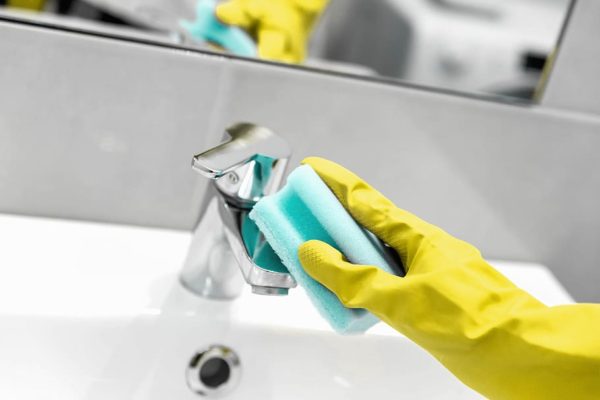When a drain gets clogged, one of the most frustrating situations is when the sink, bathtub, or toilet fills up and refuses to empty. This is what people mean when they talk about “standing water.” Instead of trickling down slowly, the water just sits there, stagnant, sometimes rising higher the more you try to use the fixture. At this point, many homeowners start wondering if Liquid Fire drain cleaner can still do its job when the pipe is already full of water. The question is practical, but the answer involves chemistry, plumbing design, and even safety concerns. So, does Liquid Fire work in standing water? The short answer is: yes, it can, but with important limitations and risks.
To understand why, we first need to talk about how Liquid Fire works. The product is made mostly of concentrated sulfuric acid. This chemical reacts strongly with organic matter, like hair, food scraps, grease, and soap scum, which are the main culprits behind most clogs. When the acid touches these substances, it breaks them down, producing heat in the process. This heat can even dissolve grease that has solidified along pipe walls. The reaction is powerful enough to clear out blockages that normal plungers or baking soda-vinegar mixtures cannot. That is why Liquid Fire is sometimes called the “last resort” cleaner before calling a plumber.
Now, when there is standing water in a sink or bathtub, the problem is that the cleaner has to travel through that water before reaching the clog. Unlike some drain cleaners that are lighter and mix with water, Liquid Fire is denser. This means it can sink down through the standing water and reach the clog. That density is one reason people report that it “works even if the sink is full.” A Reddit thread on r/Plumbing once discussed this exact point, with several users agreeing that the acid is heavy enough to go straight to the blockage without dispersing too much in the water above it.
But while the density of Liquid Fire makes it technically effective in standing water, the situation is far from simple. Pouring sulfuric acid into a basin already full of water increases the chance of splashing and chemical reaction close to the user’s face or hands. Safety instructions on the bottle explicitly warn against standing too close or pouring too quickly. Real-life reports include cases where people leaned over a sink of water, poured in Liquid Fire, and then inhaled strong fumes as the acid started reacting beneath the surface. In small bathrooms, these fumes can build up quickly.
Another issue is that the standing water dilutes the acid as it spreads out. While some of the product sinks straight to the clog, some of it mixes into the water above, making the overall reaction weaker. This is why users often report needing to use more of the product when dealing with standing water compared to when they pour it directly into a dry or slow-draining pipe. However, using larger amounts adds more risk to the pipes themselves. Plumbers in Illinois and Michigan often warn that dumping large quantities of Liquid Fire into already-stressed plumbing can accelerate corrosion or even warp PVC pipes if the heat produced becomes too intense.
There is also the problem of unknown clogs. Not all blockages are the same. If the standing water is caused by a grease and hair clog, Liquid Fire has a good chance of working. But if the problem is a foreign object, like a child’s toy, a toothbrush, or solid mineral buildup, the chemical reaction won’t fix it. In those cases, the standing water simply sits on top of an immovable obstruction, and the acid only increases the danger without providing a solution. A plumber in Texas shared a story about being called to a home where the owners had poured Liquid Fire into a kitchen sink full of water, only to discover later that the clog was caused by a piece of broken glass wedged in the pipe. The acid did nothing but corrode the metal trap.
Geography plays a role in how common standing water problems are and how people approach them. In southern states with older homes, like Louisiana and Mississippi, older cast-iron plumbing is still common. These pipes are more vulnerable to corrosion from repeated use of acidic cleaners. In newer suburban developments in states like Arizona or Nevada, PVC is more common, which handles acid differently but can soften under heat. In both regions, plumbers stress that while Liquid Fire may clear standing water clogs once or twice, relying on it regularly can shorten the lifespan of the plumbing system.
From a safety perspective, using Liquid Fire in standing water adds several risks. The first is splash-back, which can happen if the water bubbles or reacts suddenly. The second is improper dilution, which might leave enough acid mixed into the water that later handling becomes dangerous. For example, if someone pours Liquid Fire into a sink of standing water and it does not work, they may then try to scoop the water out with a cup. That water, however, now contains sulfuric acid. Poison control centers across the United States have handled multiple calls from people who burned their hands by trying to remove “regular water” that was in fact contaminated with Liquid Fire.
So, does it work? Yes, often it does. The chemical’s density allows it to cut through standing water and reach the clog. Users on Amazon reviews frequently mention success in clearing tubs or sinks that were full of water, often praising it as a “miracle worker.” But these same reviews also include many warnings about the dangers, with people emphasizing that gloves, goggles, and ventilation are non-negotiable. Some even recommend keeping a box of baking soda nearby to neutralize spills or splashes.
The final consideration is alternatives. If the question is whether Liquid Fire works in standing water, the real follow-up should be: should you use it? Professional plumbers nearly always recommend trying mechanical methods first, such as plungers, drain snakes, or wet/dry vacuums. These methods carry no chemical risks. For people who live in areas with high groundwater concerns, like parts of Florida, avoiding chemical drain openers also helps protect local ecosystems. Liquid Fire should remain a last-resort option, even though technically it can handle standing water clogs.
In conclusion, Liquid Fire does work in standing water, but it is a risky solution. Its density helps it sink to the clog, but standing water increases dangers like splashing, dilution, and handling contaminated water afterward. While it may save the day in some emergencies, it is best viewed as a temporary fix, not a routine solution. For safety, health, and long-term plumbing care, most experts suggest calling a plumber or using non-chemical tools whenever possible.






